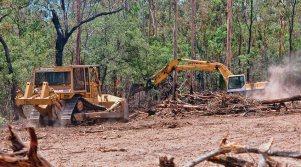
It might come as a bit of shock to some who might give more than a shit about our State’s environmental integrity that there is no dedicated legislation to protect biodiversity in South Australia today.
What? Well, ok, we do have the Native Vegetation Act that is supposed to restrict the clearing of existing native vegetation (of which there is precious little left), and the National Parks and Wildlife Act 1972 to legislate protected areas and species endangerment. We also have the Wilderness Protection Act 1992 that addresses wilderness protection and land restoration, and the Natural Resource Management Act 2004 that is designed to promote sustainable and integrated management of the State’s natural resources. Finally, the South Australia Environment Protection Authority operates under various acts1 to limit environmental damage.
However, South Australia has no act specifically focussed on biodiversity conservation, and the legislation that does exist does not even consider invertebrates (like insects) as animals — because most animals are in fact invertebrates, this means that most of South Australia’s species are ineligible for official threat listing, even if they have a high risk of extinction.
If you recall, I reported in July this year that in 2017 we had a Parliamentary Inquiry into Biodiversity2, which concluded that existing environmental legislation in South Australia “… lacks cohesion and consistency, particularly regarding enforcement and compliance provisions”.
In my judgement, therefore, an entirely new, biodiversity-focussed act would add legislative teeth to biodiversity conservation in South Australia. As it turns out, that very same Parliamentary Inquiry into Biodiversity I mentioned above recommended3 the creation of a Biodiversity Expert Panel to reform the legislative framework of environmental protection. Thus, the new Government of South Australia has the perfect opportunity to do so under their proposed changes to natural resource management legislation. Following these calls for reform and the new direction of Nature of SA, there is a real opportunity here for statutory reform that includes integrated biodiversity legislation analogous to the New South Wales Biodiversity Conservation Act 2016.
Let’s now re-examine why a new act is needed. Broad-scale clearing of vegetation in South Australia was certainly limited for the first time in any meaningful sense in 1991 when the Native Vegetation Act came into effect. However, each year there are between 1000 and 2000 hectares legally cleared in South Australia (as administered by the Native Vegetation Council), and over 200 hectares cleared illegally.
For example, The Native Vegetation Council needs better connection to the planning process for development projects proposing to clear. In fact, development planning is most often done before consulting the Council, so that it becomes of case of approve/not approve, instead of being able to influence the planning from the outset. It should therefore be a legal requirement of development proponents to seek advice from the Council before project planning commences.
But by far the biggest weakness of the Native Vegetation Act is the ability for separate legislation to be created at the drop of the hat by the sitting government to circumvent the Act. For example, if a development is successfully assessed as ‘major’ (whatever the hell that means) under the Development Act 1993[6], it can under certain circumstances be permitted to bypass and completely ignore all restrictions of the Native Vegetation Act via the passing of new, dominant legislation. This occurred recently with the approval of the Bend Motorsport Park when it lobbied for, and was granted, special compensation to clear unique native vegetation without the approval of the Native Vegetation Council!
This sort of special compensation undermines the entire Act, and renders the Native Vegetation Council’s oversight toothless. We therefore need immediate rectification of this perverse loophole because the practice of allowing commercial interests to circumvent the Act essentially permits the largest and most biodiversity-destructive developments to go ahead unhindered.
So, let’s collectively lobby the current government to make these necessary changes to fix our broken biodiversity legislation, and hopefully in the long run, create new, specific legislation that treats biodiversity as more than just an afterthought.
CJA Bradshaw
—
1Including the Aquaculture Act 2001, Environmental Protection Act 1993, Radiation Protection and Control Act 1982, and the Wingfield Waste Depot Closure Act 1999
2The new government has made it difficult to find previous reports tabled under a Labor government, so for your convenience, I have provided the full report here for download.
3However, the Minister for Sustainability, Environment and Conservation at the time (Ian Hunter) responded that “… it would be premature to embark on significant changes to conservation legislation and policy frameworks …” given the existence of Nature of SA. Unfortunately, Nature of SA cannot create, propose, or otherwise implement new, State-level legislation.

